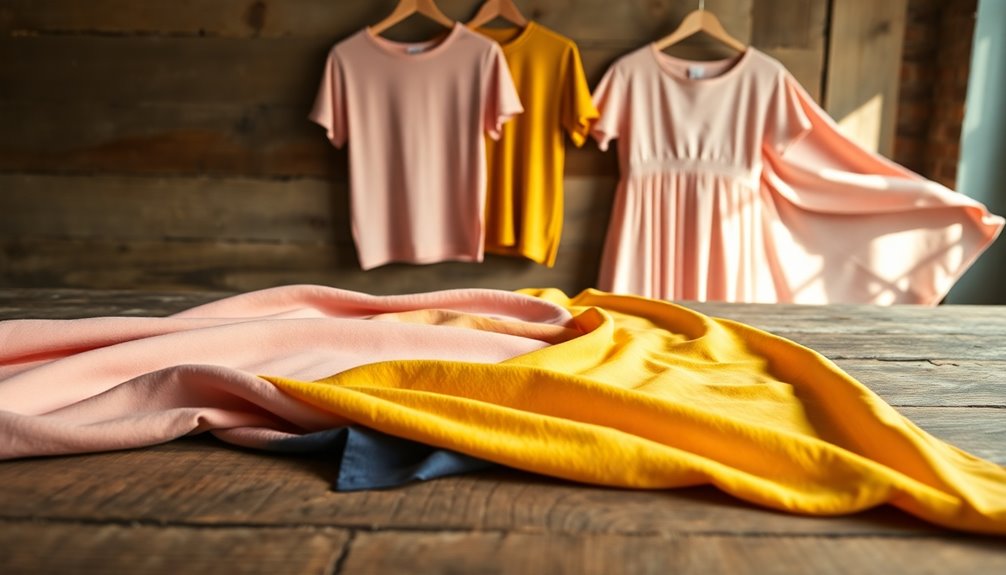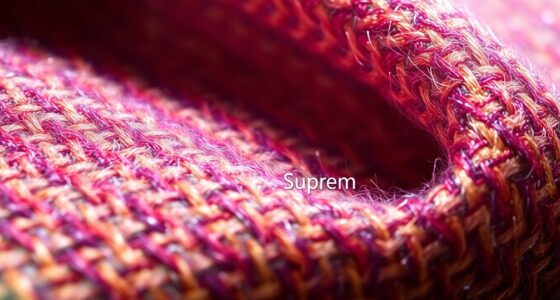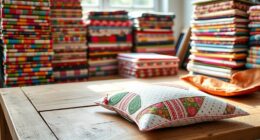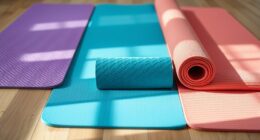Jersey fabric is your go-to material for everything from casual t-shirts to elegant dresses. Known for its incredible softness and stretch, it's perfect for comfortable clothing. You'll love how it drapes and breathes, making it ideal for activewear too. Originating from the island of Jersey, this fabric has a rich history and comes in various types for all your needs. Stick with us to discover more about its styles, uses, and sustainable practices.
Key Takeaways
- Jersey fabric is known for its incredible softness and stretch, making it ideal for casual clothing like t-shirts and dresses.
- Different types of jersey fabrics, such as single, double, and ribbed, cater to various garment styles and purposes.
- Jersey fabric's moisture-wicking and breathable qualities make it a popular choice for activewear and sportswear.
- Sustainable practices in jersey fabric production focus on organic materials and ethical manufacturing processes to reduce environmental impact.
- The growing demand for customizable designs and performance-oriented fabrics is shaping the future of jersey fabric in fashion.
What Is Jersey Fabric?
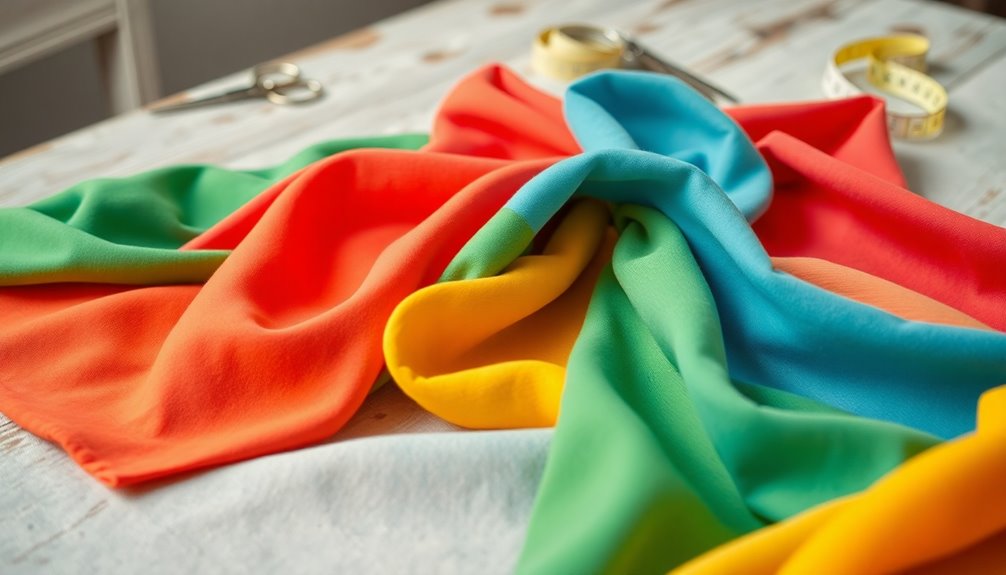
Jersey fabric is a popular choice in the world of textiles, known for its incredible softness and stretch. This knitted textile offers exceptional comfort, making it perfect for casual clothing like t-shirts, dresses, and leggings.
Originally crafted from wool, you'll now find cotton jersey fabric and synthetic blends that enhance versatility in texture and weight. The fabric's smooth surface, with fine ribs on one side, provides excellent drape, suitable for both casual and formal wear.
Jersey fabric comes in various types, including single jersey and double knit, each designed for specific garment needs. Its moisture-wicking properties and breathability make it a favorite for activewear, ensuring you stay comfortable during physical activities.
The History of Jersey Fabric
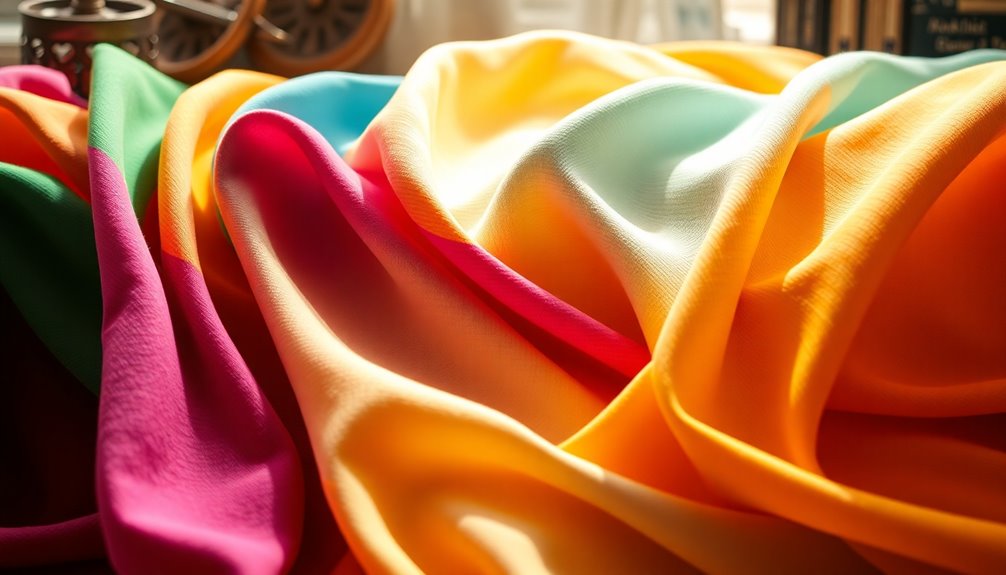
Originating from the island of Jersey in the English Channel, this fabric has a rich history that dates back to the 18th century.
Initially, Jersey fabric was used for practical garments like underwear and sportswear. However, by the late 19th century, it became a staple in women's fashion, especially after Coco Chanel introduced the iconic cardigan sweater made from this versatile material.
Today, Jersey fabric boasts a diverse production using cotton, synthetic fibers, and even bamboo, adapting to modern needs.
Its evolution reflects both historical significance and contemporary trends.
- Originated from a unique knitting technique
- Shifted from practical to fashionable
- Available in a variety of colors and patterns
Key Characteristics of Jersey Fabric
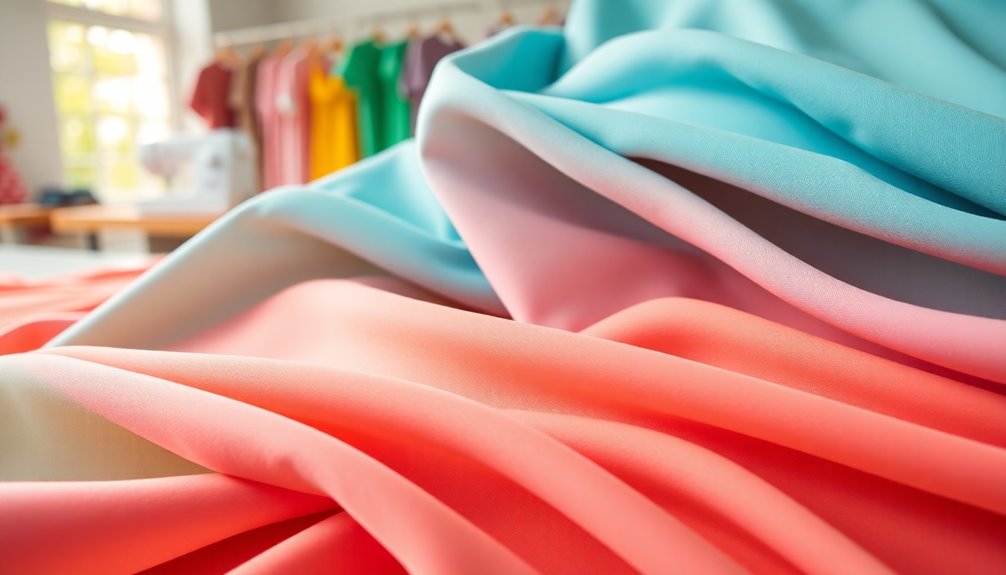
When it comes to understanding the key characteristics of this fabric, you'll quickly notice its remarkable stretch and recovery. Jersey fabric is a stretchy knit that returns to its original shape, making it perfect for form-fitting garments.
Its soft and smooth texture feels great against your skin, which is why it's often used for undergarments and sleepwear. Jersey offers excellent drape, ranging from lightweight to medium-weight, allowing for versatile styles.
Plus, it's durable enough to withstand regular wear and washing, making it a practical choice for everyday clothing. Typically, one side of jersey has a smooth finish, while the other features a distinct loop texture, enhancing both its aesthetic appeal and functionality.
Different Types of Jersey Fabrics
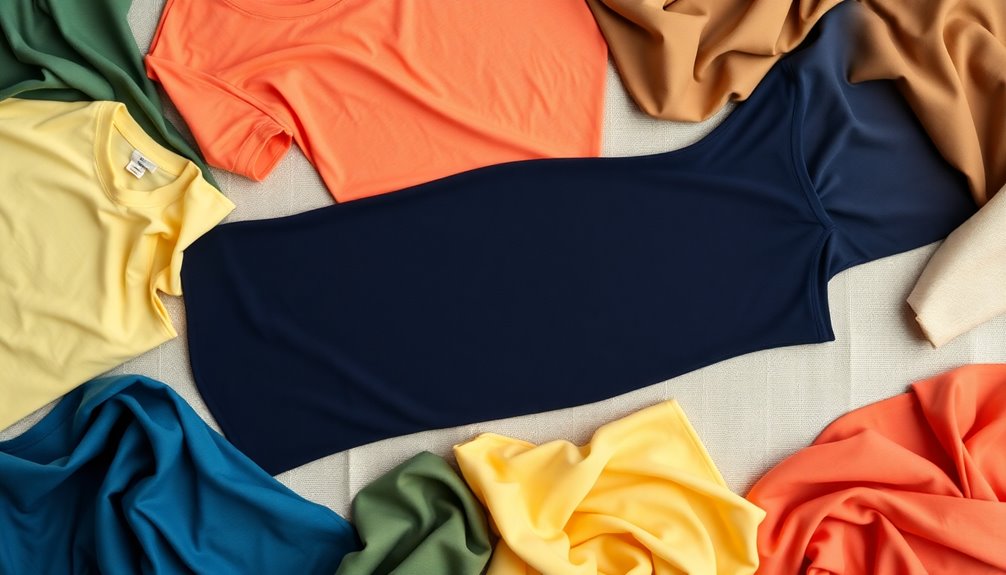
There are several types of jersey fabrics, each offering unique qualities and uses. Understanding the different types can help you choose the right fabric for your next project.
- Single Jersey: Lightweight and smooth, perfect for T-shirts.
- Double Jersey: Thicker and more durable, ideal for structured garments like dresses.
- Ribbed Jersey: Stretchy and comfortable, often used for cuffs and collars.
Other types include Interlock Jersey, which is warmer and suitable for baby clothes, and Jacquard Jersey, known for its intricate patterns.
Common Uses of Jersey Fabric
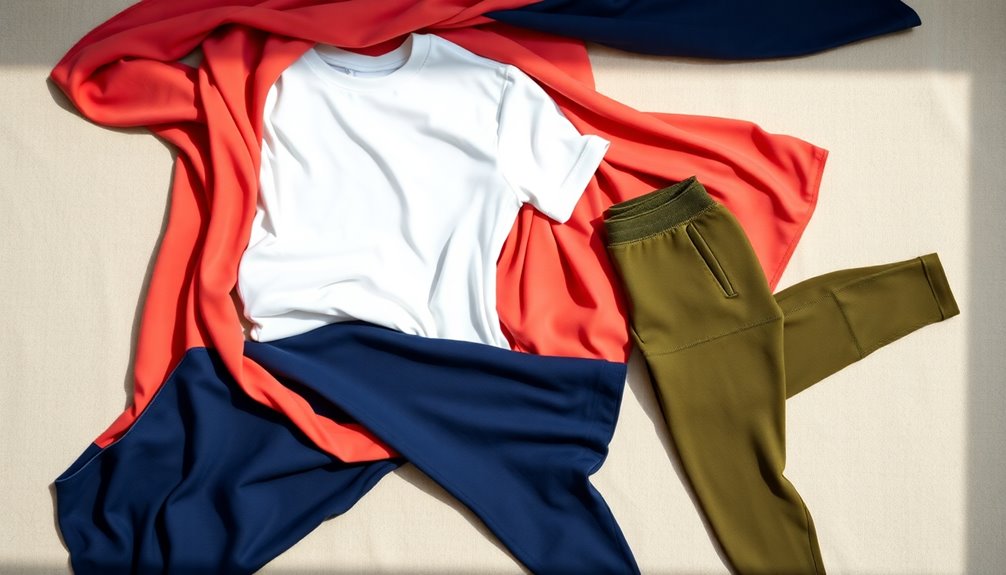
Jersey fabric's versatility makes it a go-to choice for a variety of clothing items and accessories. This stretchy fabric is commonly used for making T-shirts, dresses, skirts, and leggings, ensuring comfort and style.
Its softness makes it perfect for undergarments and sleepwear, allowing you to enjoy a restful night. Additionally, jersey fabric is an excellent choice for activewear and sportswear, providing the flexibility and breathability needed for activities like yoga and running.
Beyond apparel, you'll find jersey fabric used in bedding, enhancing your comfort at home. It also shines in home décor, with cushion covers and curtains adding a cozy touch.
Accessories like scarves and headbands made from jersey fabric bring warmth and flair to any outfit.
Tips for Sewing With Jersey
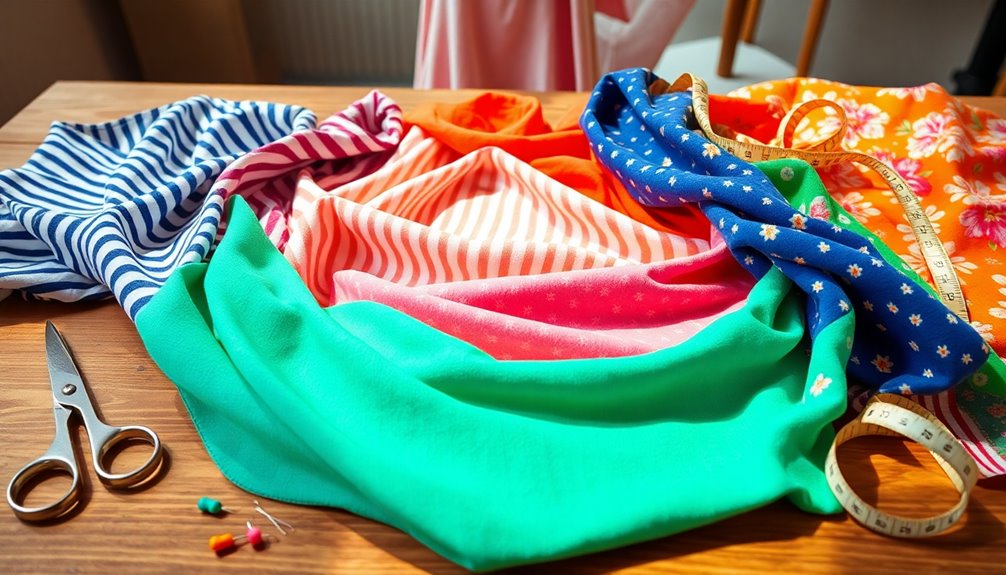
When you're sewing with jersey, it's vital to choose the right needle, like a ballpoint, to avoid snags.
You'll also want to master essential techniques, such as using stretch stitches, to keep your seams strong.
Finally, don't forget to care for your finished garments properly to keep them looking great longer.
Choosing the Right Needle
Choosing the right needle is essential for achieving a smooth finish when sewing with jersey fabric. For the best results, use a ballpoint or jersey needle, designed to slide between fabric fibers without causing snags.
Needle size matters too; select between 70/10 and 90/14 based on your fabric's weight. Lightweight fabrics need a smaller size, while heavier ones require a larger one.
Here are some tips to keep in mind:
- Adjust your sewing machine's stitch length to 3.0-4.0 for stretch.
- Consider using a walking foot to feed the fabric evenly.
- Regularly check your needle for wear to avoid stitching issues.
With these tips, you'll make sewing with jersey fabric a breeze!
Essential Sewing Techniques
Sewing with jersey fabric can be a rewarding experience if you master a few essential techniques. Start by using a ballpoint needle, which prevents snagging and tearing thanks to its design tailored for knitted fabrics.
Pre-wash your fabric to avoid shrinkage and guarantee it lays flat for cutting. When sewing jersey fabric, a serger or a zigzag stitch will allow for stretch and recovery, keeping seams intact during wear.
For high-stress areas like necklines and armholes, incorporating clear elastic or stay tape adds support without bulk.
Finally, when hemming, opt for a twin needle to achieve a professional finish with two parallel rows of stitching that maintain flexibility.
Happy sewing!
Caring for Finished Garments
Caring for your finished jersey garments is essential to maintain their look and longevity. Start by pre-treating the fabric to prevent shrinking, ideally through steaming or dry-cleaning.
When sewing, always use a ballpoint needle to avoid damaging fibers. Reinforcing seams in high-stress areas, like necklines and armholes, will enhance durability and prevent tearing.
- Use polyester all-purpose threads for strong seams.
- When pressing, remember to press gently without sliding the iron to avoid stretching fabric.
- Follow care instructions closely for washing and drying to maintain the garment's shape. Additionally, consider using cruelty-free products to ensure that your sewing tools and materials align with ethical standards in fabric care.
Care and Maintenance of Jersey Fabric

Jersey fabric requires specific care to keep it looking great and lasting longer. Always check the care label before washing; typically, it can be machine washed in cold water to prevent shrinking.
To avoid pilling, turn your garments inside out and skip fabric softeners. When it comes to drying, air dry your jersey or use a low heat setting in the dryer to maintain its shape.
For ironing, use a low temperature and place a pressing cloth over the fabric to protect the fibers—avoid moving the iron back and forth to prevent stretching.
Regularly inspect your items for signs of wear and damage, and don't hesitate to mend any small tears or loose seams to extend their lifespan.
Styling Ideas for Jersey Fabric
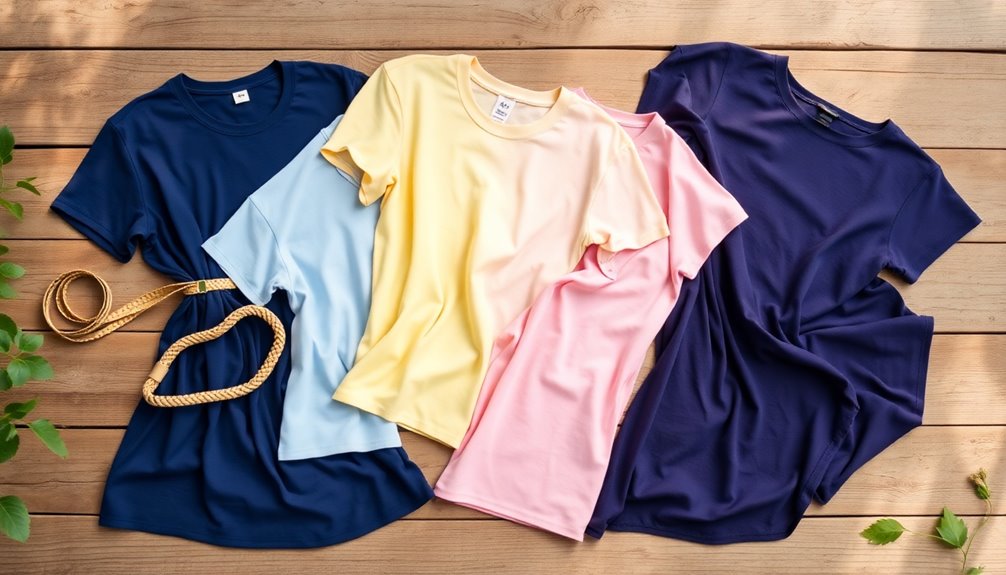
When it comes to styling, jersey fabric offers endless possibilities for creating versatile outfits. Its natural stretch and softness make it comfortable to wear, providing a flattering fit for both casual and formal occasions.
You can easily elevate your look by layering jersey pieces. Here are some ideas to enhance your outfits:
- Mix jersey with other textures like denim or leather for a stylish contrast.
- Accessorize jersey outfits with statement jewelry to shift from casual to chic.
- Choose jersey dresses in vibrant colors or intricate patterns as focal points.
Sustainable Practices in Jersey Fabric Production
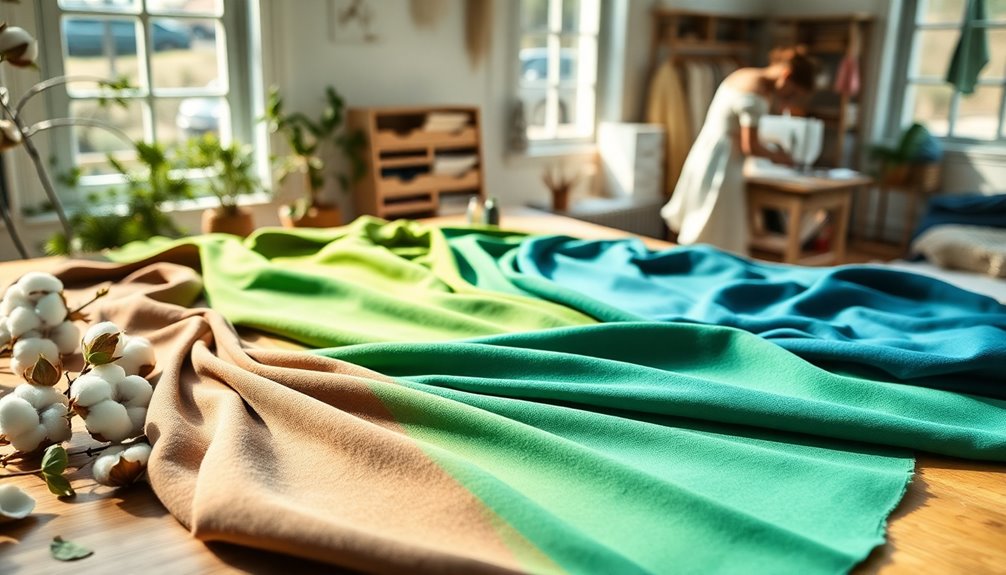
As the fashion industry faces increasing scrutiny over its environmental impact, many brands are embracing sustainable practices in jersey fabric production. They often use organic cotton, grown without synthetic pesticides or fertilizers, which reduces environmental harm and promotes biodiversity.
By incorporating recycled fibers, these brands markedly decrease waste and energy consumption linked to new fiber production. Ethical manufacturing processes guarantee fair labor conditions and respect for workers' rights, fostering a transparent supply chain.
Certifications like the Global Organic Textile Standard (GOTS) and OEKO-TEX indicate eco-friendly practices and safe chemical use throughout production. As consumer awareness rises, your informed purchasing choices can support brands that prioritize sustainable and socially responsible practices in jersey fabric production.
The Future of Jersey Fabrics
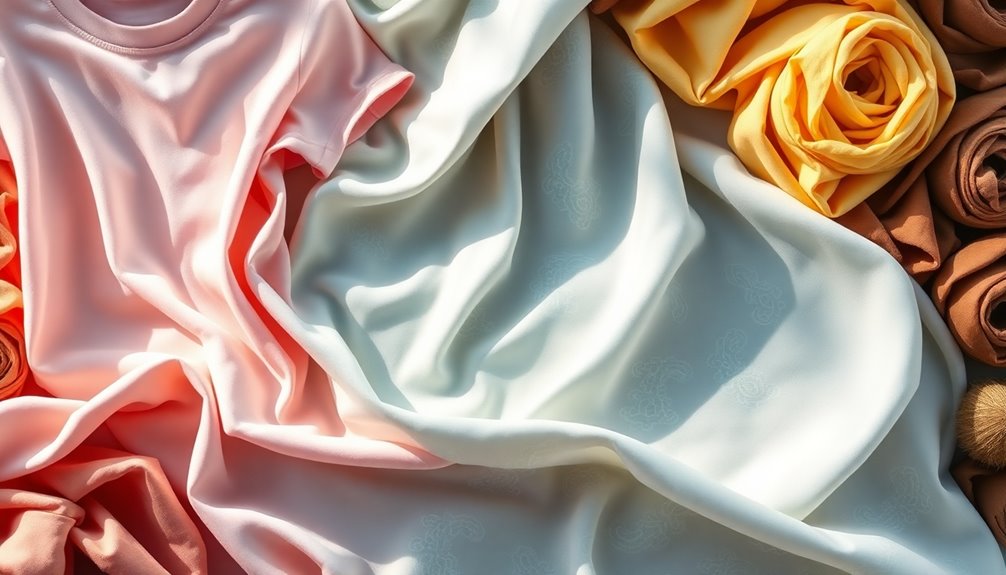
With the rising demand for sustainable and innovative materials, the future of jersey fabrics looks promising.
You'll see an increasing focus on eco-friendly choices, with brands opting for organic cotton and recycled fibers. Advances in technology will enhance jersey fabrics' performance, making them moisture-wicking and featuring antimicrobial properties, perfect for the booming athleisure market.
Plus, digital printing innovations will enable customizable designs, allowing you to express your unique style. Furthermore, the adoption of sustainable practices in textile production will ensure a reduced environmental impact, aligning with consumer preferences for eco-conscious products.
- Sustainable and eco-friendly materials will dominate.
- Enhanced performance features will cater to active lifestyles.
- Customizable designs will expand creative possibilities.
As the market for jersey fabrics grows, you can expect a diverse range of options that blend comfort, style, and sustainability seamlessly.
Frequently Asked Questions
Is Jersey Fabric Good for Dresses?
Yes, jersey fabric's great for dresses! Its excellent drape and stretch guarantee a comfortable fit that moves with you.
When you choose cotton jersey, you get breathability and softness, perfect for casual outings. For something more luxurious, silk jersey elevates your look for special occasions.
Plus, jersey's natural elasticity allows for easy movement, and its wrinkle-resistant nature keeps your dress looking polished.
With various colors and patterns, you can style it any way you like!
What Are the Disadvantages of Jersey Fabric?
When considering jersey fabric, you should be aware of some disadvantages.
It's prone to pilling, especially in high-friction areas, which can affect its appearance. Heavier options might leave you feeling hot in warm weather.
If mishandled, jersey can snag or run, leading to damage. Additionally, improper washing can cause shrinkage, and over time, stretchy garments might lose their shape, particularly around elbows and knees.
Careful maintenance is essential to keep your jersey looking good.
Do I Need a Special Needle to Sew Jersey Fabric?
Yes, you need a special needle to sew jersey fabric. A ballpoint needle is vital since its rounded tip slides between the fibers, preventing snags.
For medium-weight jersey, use a needle size between 75/11 and 90/14. Lighter jerseys require a smaller size, like 70/10, while heavier fabrics work best with a size 90/14.
Using the right needle guarantees smooth sewing and prevents skipped stitches, making your project turn out beautifully.
What Stitch Is Best for Jersey Fabric?
Think of sewing jersey fabric like dancing with a partner—you need the right moves to keep everything flowing smoothly.
For jersey, a stretch stitch or zigzag stitch is your best bet. These stitches stretch with the fabric, preventing any breakage.
Don't forget a ballpoint needle to avoid snagging, and consider using a walking foot for even tension.
If you want extra durability, a serger will keep everything neat and secure.
Happy sewing!
Conclusion
In a world where comfort meets style, jersey fabric stands out as your go-to choice for versatile fashion. From casual t-shirts to elegant dresses, its soft embrace enhances every outfit. By understanding its history, care, and eco-friendly practices, you're not just wearing fabric; you're making a statement. So, immerse yourself in the endless possibilities of jersey, and let your wardrobe flow like a gentle breeze, effortlessly blending comfort and chic into your everyday life.
